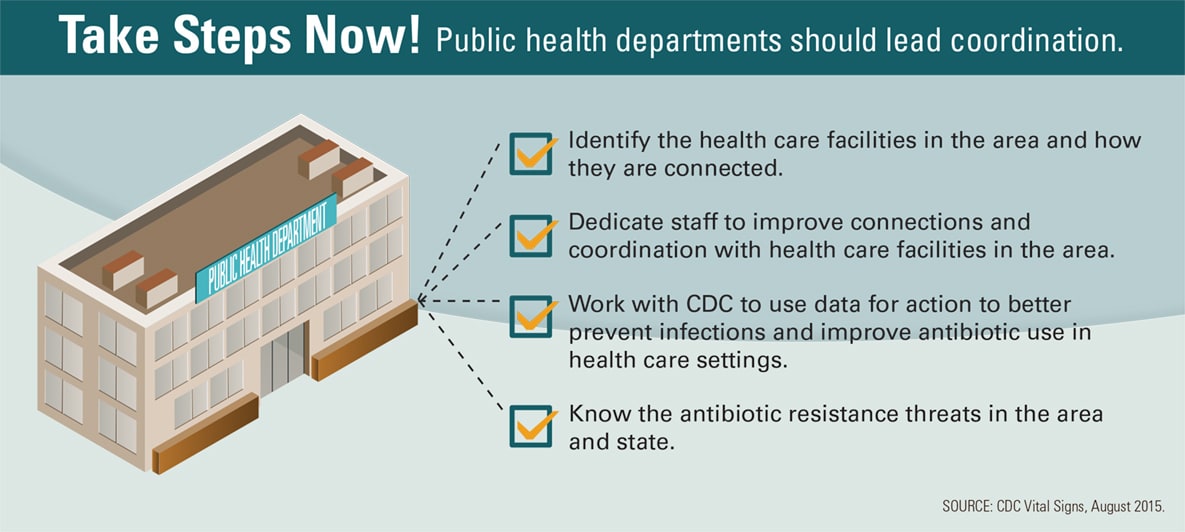Public Health Departments and CRE

When unusual forms of resistance, including certain types of CRE, are identified by healthcare or public health facilities, it should prompt a public health investigation. This investigation should be led by a public health department, working in close coordination with healthcare facilities. Some response and prevention strategies may require coordination across health jurisdictions.
Health departments should:
Transfer a Patient with CRE
Inter-Facility Infection Control Transfer Form [PDF – 3 pages]
- Understand the prevalence or incidence of CP-CRE in their jurisdiction by performing some form of regional surveillance for these organisms.
- Increase awareness among healthcare facilities of the regional prevalence of CP-CRE and prevention strategies and initiatives.
- Provide a standardized form for facilities to use during patient transfers, especially between hospitals and long-term care facilities.
- Consider including CRE infections on your state’s Notifiable Diseases List.
- Include a range of facility types when developing regional CRE prevention projects.
- Be a resource for healthcare facilities on appropriate infection prevention measures and antimicrobial stewardship.
Resources
See the library of
Infection Control Guidelines
- Containment Strategy Guidelines
- Expanded Antimicrobial Susceptibility Testing for Hard-to-Treat Infections (ExAST)
- Frequently Asked Questions and Example Verbal Scripts to Request Assent for Multidrug-Resistant Organism (MDRO) Screening [DOC – 40 KB]
- Facility Guidance for Control of Carbapenem-resistant Enterobacterales (CRE)
- Containing Unusual Resistance: CDC Vital Signs
- Responding to New Forms of Antibiotic Resistance [PDF – 526 KB]
- CRE Carbapenem-resistant Enterobacterales Handout [PDF – 2 pages]
- CRPA Carbapenem-resistant Pseudomonas aeruginosa Handout [PDF – 2 pages]
- CRAB Carbapenem-resistant Pseudomonas aeruginosa Handout [PDF – 2 pages]